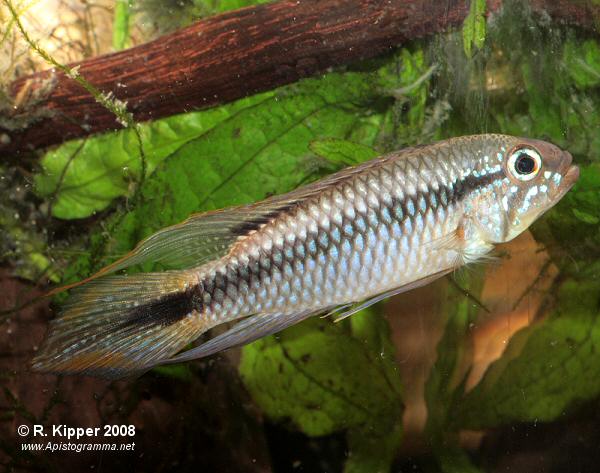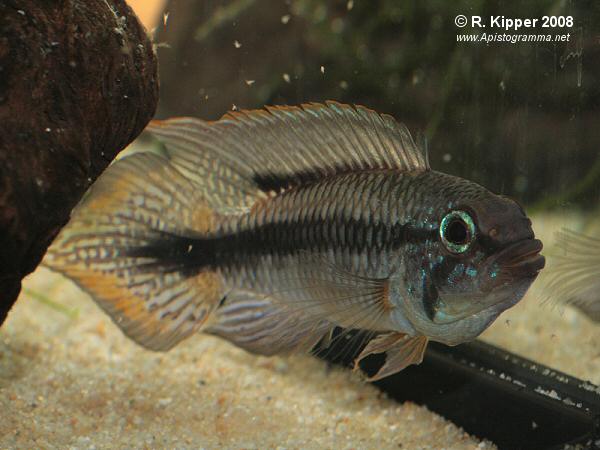Last week I posted asking for help IDing a female apisto (here is the thread http://forum.apistogramma.com/showthread.php?t=7758) and Mike provided A. gephyra as a likely answer. Today I got a couple of males from the importer and sure enough Mike was right on the money. Here are a few poor photos I shot of the fish minutes after introduction



Thanks Mike - I have trouble IDing females even when I have the males and here you got it first try - amazing!
Bob



Thanks Mike - I have trouble IDing females even when I have the males and here you got it first try - amazing!
Bob

